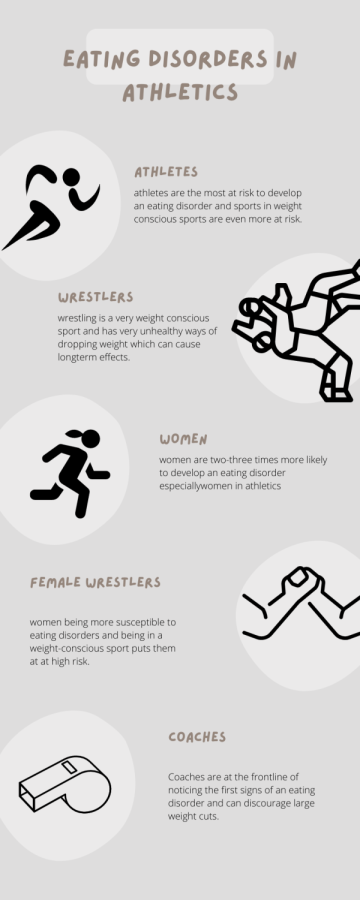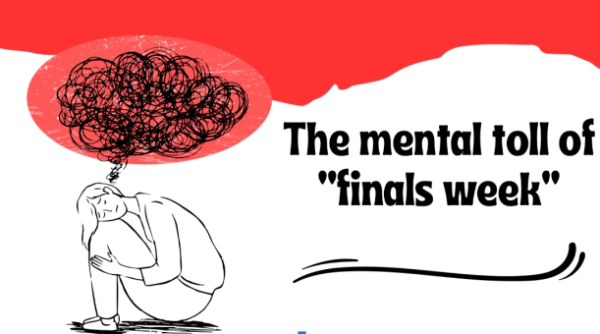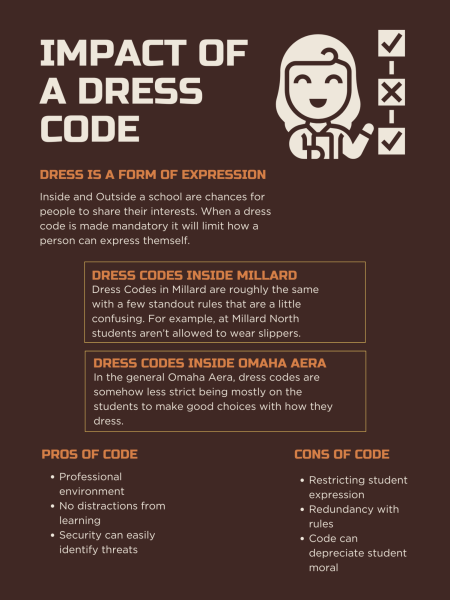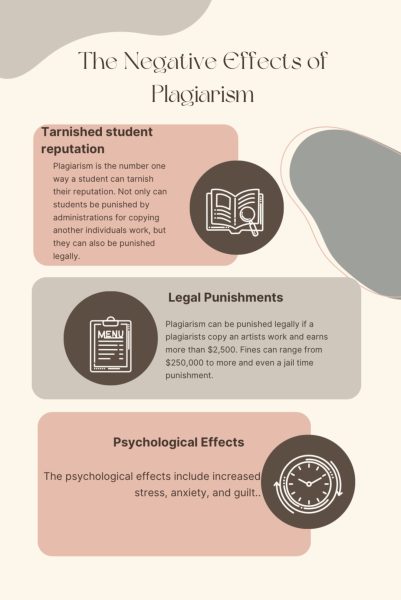Eating disorders in athletics
How wrestlers are more at risk
March 18, 2022
Mental health struggles have been a large focus in recent years including eating disorders. Something not focused on is that statistically, athletes as a group are most likely to develop eating disorders according to Walden behavioral care. In addition to athletes being more at risk, many sports are more likely to develop eating disorders than others like highly weight-conscious sports such as wrestling, and it is a strongly ignored topic in high school athletics.
Approximately 9% of our population has been diagnosed with an eating disorder from the EDI test according to the NCBI given this statistic of 1,500 students around 135 would struggle with an eating disorder with athletes being at a higher risk from stigmas of their sport. Athletes are also less likely to seek treatment due to stigma. A study at the University of Utah showed that one-third of female and 33% of male college athletes struggled with disordered eating. As well as 35-57% of adolescent girls engage in crash dieting, forced vomiting, fasting, diet pills, or laxatives. The same study showed that athletes in bodybuilding, gymnastics, swimming, wrestling, and rowing were most susceptible to an eating disorder.
Out of all sports, wrestlers were the most at risk for developing a long-term eating disorder according to the study. Wrestlers often use binging and purging and abuse laxatives to make weight for a match often binging following a match. A second study at Arizona state showed that in-season and off-season wrestlers showed significant similarities in scores on the eating disorder inventory test. These results suggested the long-term effects of weight cutting in wrestling.
To be eligible all wrestlers must complete a skin fold test also known as an alpha test as well as hydration testing to determine the minimum weight they can wrestle at and a decrease plan to tell them how fast they can lose that weight according to OHSAA. When these tests were put into place it seemed foolproof to most people, but since it was put into place many wrestlers have found ways to cut more weight than healthy despite the test. Many athletes begin their weight cuts before the season to weigh lower than normal to begin with allowing them to cut more weight for the season.
A strong push to cut a weight class or even multiple weight classes often starts even as early as youth wrestling. A strong stigma that wrestlers need to cut weight to be successful has made cutting several weight classes the new normal. This obsession with the scale at an early age leads to long-term disordered eating and body dysphoria according to eating disorder help. Coaches are often the first to observe this extreme weight cutting and could stop it before it causes long-term mental health damage but are often at the frontline of encouraging athletes to drop weight.
With the rapid growth of women’s wrestling and the strong statistic that women are two-three times more likely to develop an eating disorder according to the center of discovery for eating disorders and treatment. Women being more at risk and the strong weight cutting push in the sport of wrestling can cause a high rate of eating disorders in women’s wrestling if it isn’t a close focus of coaching staff to prevent problems before they occur. Another problem with weight that arises with women’s wrestling is the body mass differences between men and women. Women’s weight typically fluctuates more than men’s and it is harder for them to lose weight according to Cleveland clinic. This makes it more likely to try to lose even more weight to account for any fluctuation in their weight and without intervention could be a large problem in the wrestling community. Coaches should monitor the techniques their athletes use to cut weight and discourage large weight cuts to prevent long-term negative effects from the sport.

















